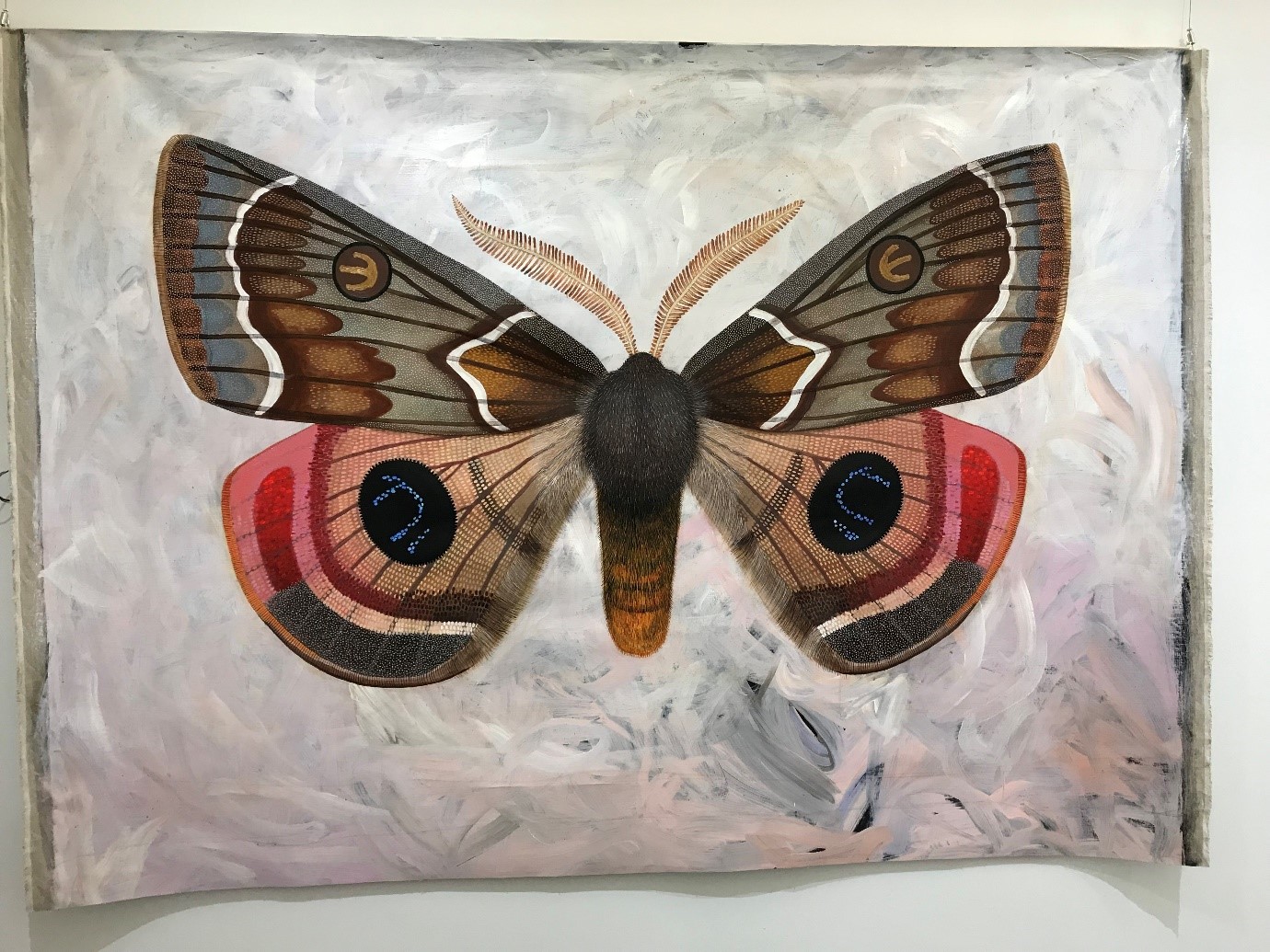A new exhibition showcasing the variety, fragility and beauty of Moths of the South West and Great Southern will fascinate lovers of art and science alike.
The exhibition, Moth, by Albany artist and environmental scientist, Chelsea Hopkins-Allan, provides a detailed view of the striking colour, texture and design of this group of local species of Lepidoptera.
Thanks to a combination of different materials, dimensions and interpretations, the works provide a detailed perspective of this elusive and fascinating family of insects. The specimen works offer a quasi-scientific view; the acrylic and oil pieces allow a microscopic examination of the beauty of the wings and the giant works onlinen encourage us to appreciate nature in all its splendour.
All of the Moth species featured in the exhibition are found in the Great Southern and South West Regions of Western Australia. Some are not found anywhere else in the world (such as the Dryandra moth).
Moths have important links to our environment. Each stage of their lifecycle has different requirements, from specific food plants for their larvae to conditions that trigger their emergence from the cocoon and whether suitable plants are available to lay their eggs. The various life stages are an important food source for other creatures and the larvae play an important role in recycling organic leaf matter and debris.
Little is known about most moth species and, it is believed that up to half of the species in existence are yet to be identified.
Moth will be on display at the Manjimup Art Gallery (cnr Rose and Mount Streets) from 10 April to 18 May 2019.


